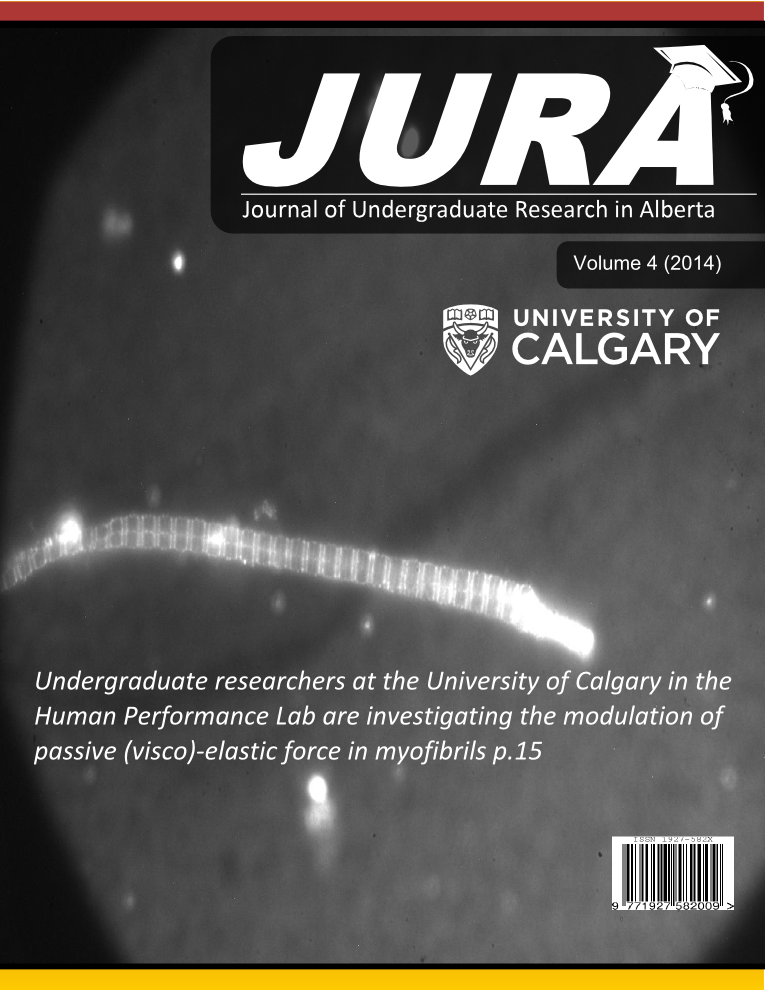Effect of Obersity on Gait Symmetry Following Anterior Cruciate Ligament Transection
Keywords:
Obesity, Sprague-Dawley Rats, Gait, OsteoarthritisAbstract
Introduction: Obesity is considered a risk factor for both the onset and progression of osteoarthritis (OA). Obesity, OA and mechanical perturbation have all been identified individually to increase gait asymmetry. The purpose of this study was to assess the effect of obesity on the progression of gait asymmetry as a component of a diet induced obesity (DIO) OA model in the presence of mechanical perturbation. Methods: 28 Sprague Dawley Rats were assigned to a high fat, high sucrose diet or a low fat diet group (LFD). Twelve weeks post DIO groups receive an anterior cruciate ligament transection (ACL-X), or sham surgery. Pre-surgery, 1-week, 8-week, and 16-weeks post-surgery, kinetic data were collected by 3-D force plate analysis. Peak vertical ground reaction force (pVGRF), vertical impulse, and stance times were quantified then compared between limbs to quantify an asymmetry index (AI). Results: There were no differences in normalized pVGRF AI between hind limbs in the DIO or LFD group animals. Stance times decreased for both hind limbs in both DIO group animals. DIO ACL-X group animals had a greater AI compared to LFD group animals at 1-week post-surgery, and both DIO group animals had greater AI at 8 and 16 weeks post-surgery, compared to LFD group animals. Conclusion: DIO group animals exhibited gait patterns with increased asymmetries compared to LFD group animals, regardless of presence or absence of mechanical perturbation, suggesting that obesity causes distinct changes in gait patterns accelerating the onset and progression of knee osteoarthritis.Downloads
Download data is not yet available.
References
1. A.P. Hills, E.M. Hennig, N.M. Byrne, J.R. Steele, Obes. Rev. 3(1), 2002.
2. L. R. Shelton, Nurs. Pract. 38(7), 2013.
3. T.M. Griffin, J.L. Huebner, V.B. Kraus, Z. Yan, F. Guilak, Arthritis. Rheum. 64(2), 2012.
5. S.A. Oliveria, D.T. Felson, P.A. Cirillo, J.I. Reed, A.M. Walter, Epidemiology. 10(2), 1999.
6. M.F. Gregor, G.S. Hotamisligil, Annu. Rev. Immunol. 29. DOI: 10.1146/annurev-immunol-031210-101322, 2011.
7. R.A. Mooney, E.R. Sampson, J. Lerea, R.N. Rosier, M.J. Zuscik, Arthritis Res. Ther. 13(6), 2011.
8. A.M. Brunner, C.M. Henn, E.I. Drewniak, A. Lesieur-Brooks, J. Machan, et al. Osteoarthr. Cartilage. 20(6), 2012.
9. C.R. Louer, B.D. Furman, J.L. Huebner, V.B Kraus, S.A. Olson, F. Guilak, Arthritis Rheum. 64(10), 2012.
10. K.D. Allen, B.A. Mata, M.A. Gabr, J.L. Huebner, S.B. Adams, et. al, Arthritis Res. Ther. 14(2), 2012.
11. K.A Clarke, S.A. Heitmeyer, A.G. Smith, Y.O. Taiwo, Physiol. Behav. 62(5), 1997.
12. A.M Bendele, C. Degen, JMNI, 1(4), 2001.
13. W. Herzog, M.E. Adams, J.R. Matyas, J.G. Brooks, Osteoarthr. Cartilage. 1(4), 1993.
14. E. Suter, W. Herzog, T.R. Leonard, H. Nguyen, J. Biomech. 31(6), 1998.
15. B.L. O’Connor, D.M. Visco, D.A. Heck, S.L. Myers, K.D. Brandt, Arthritis Rheum, 32(9), 1989.
16. R.B. Brady, A.N. Sidiropoulos, H.J. Bennett, P.M. Rider, D.J. Marcellin-little, et. al, Am. J. Vet. Res. 74(5), 2013.
17. D.T. Felson, C.E. Chaisson, Bailliere. Clin. Rheum. 11(4), 1997.
18. J.W. Bijlsma, F. Berenbaum, F.P. Lafeber, Lancet. 377(9783), 2011.
19. M.Z.C. Ruan, R.M. Patel, B.C. Dawson, M.M. Jiang, B.H.L. Lee, Osteoarthr. Cartilage. 21(9), 2013.
20. J.S. Dufek, R.L. Currie, P. Gouws, L. Candela, A.P. Gutierrez, et. al, Movement Sci. 31(4), 2012.
21. A.P. Hills, A.W. Parker, Child Care Hlth. Dev. 18(1), 1992.
22. R.M. Palmieri-Smith, A.C. Thomas, C. Karvonen-Gutierrez, M.F. Sowers, Am. J. Phys. Med. Rehabil. 89(7), 2010.
23. B.J. Heard, Y. Achari, M. Chung, N.G. Shrive, C.B. Frank, J. Orthopaed. Res. 29(8), 2011.
24. G.D. Muir, I.Q. Whishaw, Behav. Brain Res. 103(1), 1999.
2. L. R. Shelton, Nurs. Pract. 38(7), 2013.
3. T.M. Griffin, J.L. Huebner, V.B. Kraus, Z. Yan, F. Guilak, Arthritis. Rheum. 64(2), 2012.
5. S.A. Oliveria, D.T. Felson, P.A. Cirillo, J.I. Reed, A.M. Walter, Epidemiology. 10(2), 1999.
6. M.F. Gregor, G.S. Hotamisligil, Annu. Rev. Immunol. 29. DOI: 10.1146/annurev-immunol-031210-101322, 2011.
7. R.A. Mooney, E.R. Sampson, J. Lerea, R.N. Rosier, M.J. Zuscik, Arthritis Res. Ther. 13(6), 2011.
8. A.M. Brunner, C.M. Henn, E.I. Drewniak, A. Lesieur-Brooks, J. Machan, et al. Osteoarthr. Cartilage. 20(6), 2012.
9. C.R. Louer, B.D. Furman, J.L. Huebner, V.B Kraus, S.A. Olson, F. Guilak, Arthritis Rheum. 64(10), 2012.
10. K.D. Allen, B.A. Mata, M.A. Gabr, J.L. Huebner, S.B. Adams, et. al, Arthritis Res. Ther. 14(2), 2012.
11. K.A Clarke, S.A. Heitmeyer, A.G. Smith, Y.O. Taiwo, Physiol. Behav. 62(5), 1997.
12. A.M Bendele, C. Degen, JMNI, 1(4), 2001.
13. W. Herzog, M.E. Adams, J.R. Matyas, J.G. Brooks, Osteoarthr. Cartilage. 1(4), 1993.
14. E. Suter, W. Herzog, T.R. Leonard, H. Nguyen, J. Biomech. 31(6), 1998.
15. B.L. O’Connor, D.M. Visco, D.A. Heck, S.L. Myers, K.D. Brandt, Arthritis Rheum, 32(9), 1989.
16. R.B. Brady, A.N. Sidiropoulos, H.J. Bennett, P.M. Rider, D.J. Marcellin-little, et. al, Am. J. Vet. Res. 74(5), 2013.
17. D.T. Felson, C.E. Chaisson, Bailliere. Clin. Rheum. 11(4), 1997.
18. J.W. Bijlsma, F. Berenbaum, F.P. Lafeber, Lancet. 377(9783), 2011.
19. M.Z.C. Ruan, R.M. Patel, B.C. Dawson, M.M. Jiang, B.H.L. Lee, Osteoarthr. Cartilage. 21(9), 2013.
20. J.S. Dufek, R.L. Currie, P. Gouws, L. Candela, A.P. Gutierrez, et. al, Movement Sci. 31(4), 2012.
21. A.P. Hills, A.W. Parker, Child Care Hlth. Dev. 18(1), 1992.
22. R.M. Palmieri-Smith, A.C. Thomas, C. Karvonen-Gutierrez, M.F. Sowers, Am. J. Phys. Med. Rehabil. 89(7), 2010.
23. B.J. Heard, Y. Achari, M. Chung, N.G. Shrive, C.B. Frank, J. Orthopaed. Res. 29(8), 2011.
24. G.D. Muir, I.Q. Whishaw, Behav. Brain Res. 103(1), 1999.
Downloads
Additional Files
Published
2014-07-31
Issue
Section
Articles
License
Authors retain all rights to their research work. Articles may be submitted to and accepted in other journals subsequent to publishing in JURA. Our only condition is that articles cannot be used in another undergraduate journal. Authors must be aware, however, that professional journals may refuse articles submitted or accepted elsewhere—JURA included.


